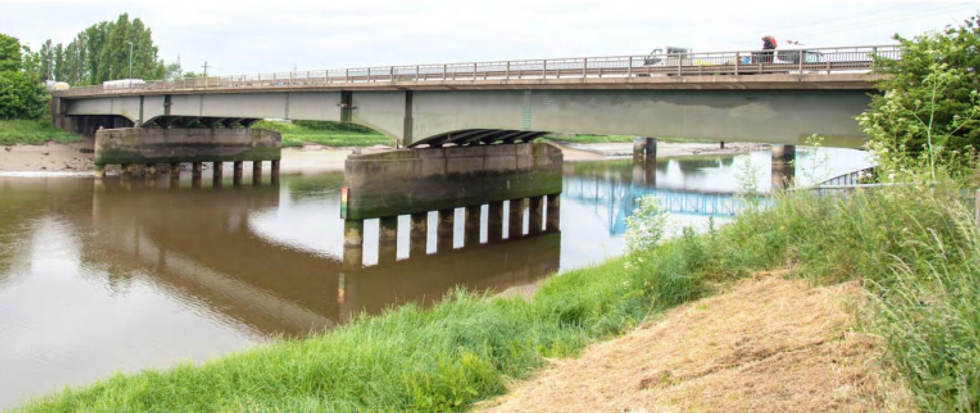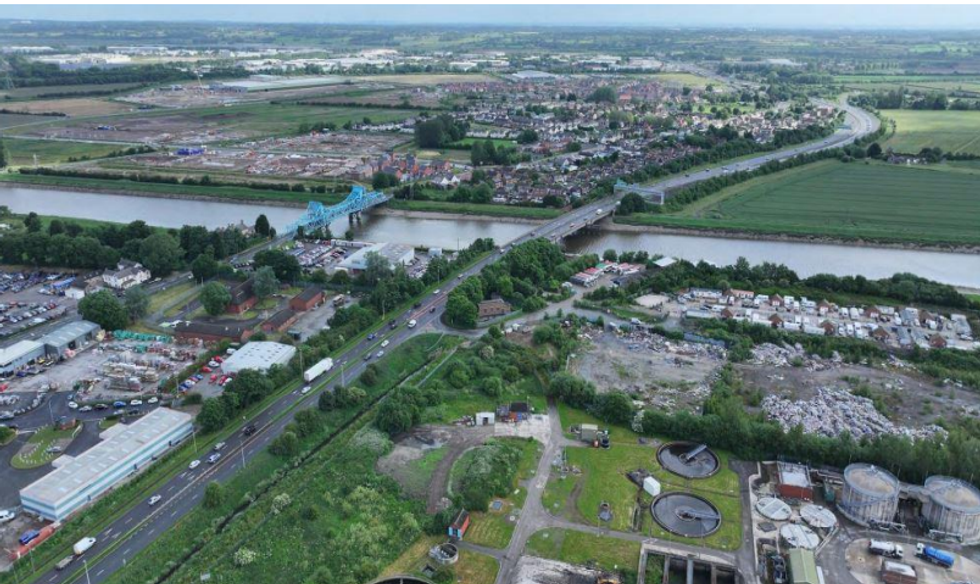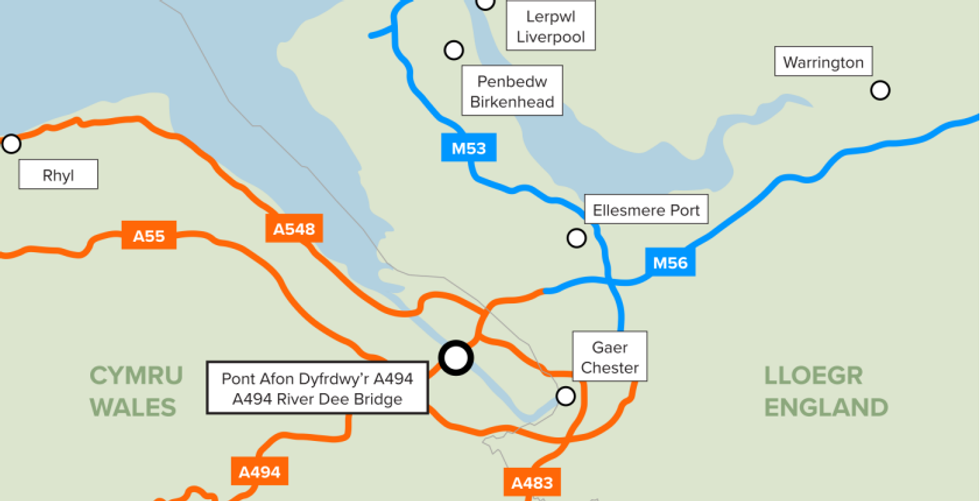Drivers to see 65-year-old bridge replaced at major crossing as daily vehicle use prompts urgent repairs

The bridge could see repair works begin in Autumn next year
Don't Miss
Most Read
Latest
Drivers have been handed a major victory after the Welsh Government unveiled plans for a £145million replacement of the deteriorating A494 River Dee Bridge.
The bridge, which currently carries approximately 68,400 vehicles every day between north Wales and northwest England, has needed urgent repairs for the past few years.
The existing structure, built in 1960, requires frequent repairs due to poor deck condition, with growing risks of major interventions that could necessitate bridge closure.
The Cabinet Secretary for Transport and North Wales confirmed a new solution for the bridge following an extensive public consultation between December 2024 and March 2025.
TRENDING
Stories
Videos
Your Say
Construction work is scheduled to commence in autumn 2026 with early site preparation, followed by main works beginning in spring 2027.
The newly chosen design involves constructing a new single-structure bridge upstream of the current crossing, featuring dual two-lane carriageways with hard shoulders and dedicated walking and cycling paths.
This vital transport link connects Queensferry with Garden City, serving as a critical economic artery for the region.
The renovations follow public feedback gathered during the consultation period, which revealed that 28 per cent of respondents backed improvements.

The bridge has been used by nearly 70,000 vehicles daily since it was built in 1960
|GOV.WALES/ MOTT MACDONALD
Support centred on the offline construction approach, which would allow the existing bridge to remain operational while the new structure is built, minimising disruption to the daily vehicle movements.
Some residents raised concerns about potential construction vehicles passing through Manor Road, prompting the Welsh Government to revise plans and propose A494 access instead.
The scheme includes provisions for future capacity expansion, with the bridge designed to potentially convert hard shoulders into running lanes if required.
The new bridge will span approximately 142 metres across the River Dee, comprised of three spans supported by riverbank abutments and two in-river piers.

The Government warned that without urgent care, the bridge repair works would double and cause more disruptions
|GOV.WALES/ MOTT MACDONALD
LATEST DEVELOPMENTS:
- Drivers urged to ditch cars in groundbreaking trial as people are 'worried about the number of cars on streets'
- Electric cars dominate sales with 'winning market share' as UK drivers ignore petrol and diesel vehicles
- Petrol and diesel drivers continue to face expensive fuel costs with 'no justifiable reason for an increase'
Total deck width will measure 31.7 metres, accommodating the dual carriageway configuration with three-metre hard shoulders, a central concrete barrier, and a four-metre shared-use path for pedestrians and cyclists on the southern side.
The structure will also feature a 5.1-metre clearance above mean high water spring tide levels, preserving navigational access for river traffic.
Active travel improvements have also been considered in the plans and include roughly three kilometres of new and enhanced routes, connecting to the Wales Coast Path and National Cycle Network Route 568.
The bridge is expected to be completed by autumn 2029, followed by the demolition of the existing structure a few months later.

The bridge renovations are expected to cost £145million
|GOV.WALES
Traffic flow will be maintained throughout construction, with two lanes operating during peak periods as the new alignment is built offline, approximately 12 metres southeast of the current bridge.
Temporary diversions will affect walking and cycling routes, including the Wales Coast Path, though alternative paths will be established before any closures.
Official documents detailed: "If nothing is done, then existing structural issues with the A494 River Dee bridge will persist, ultimately leading to its deterioration. This scenario would have serious consequences for both the regional and national economy due to disrupted strategic traffic flows and freight movement.
"Inaction would likely result in weight restrictions, lane closures and eventually a full closure of the bridge. Such measures would cause significant disruption, congestion, and delays for the travelling public, businesses, and freight operators."











